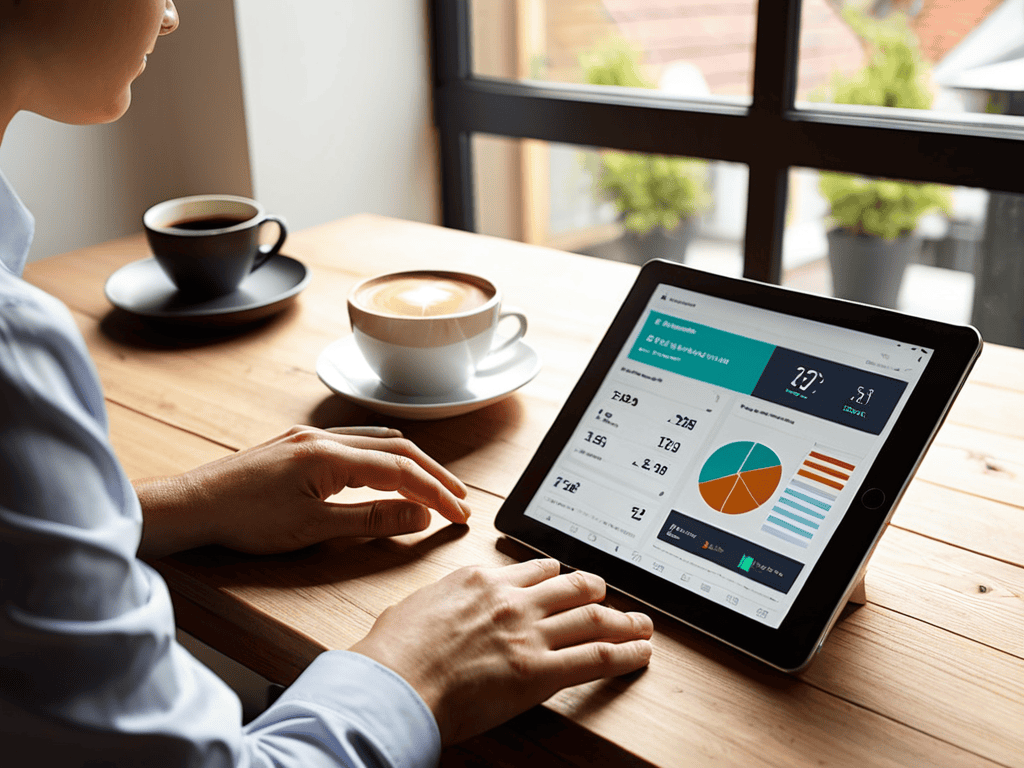I still remember the day I bought my first Exchange-Traded Fund (ETF) like it was yesterday. The process of learning how to buy your first Exchange-Traded Fund (ETF) was daunting, to say the least. A common myth is that investing in ETFs is only for seasoned investors, but I’m here to tell you that’s not true. With the right guidance, anyone can start their investment journey. I recall my parents, who were entrepreneurs, always discussing the importance of diversifying their portfolio, and how ETFs played a significant role in that. This sparked my interest, and I began to learn more about the process.
As you read this article, you’ll get practical advice on navigating the world of ETFs. I’ll walk you through the steps to buy your first ETF, from understanding the basics to making your first investment. You’ll learn how to evaluate your financial goals, choose the right ETF for your portfolio, and execute your first trade with confidence. My goal is to empower you with the knowledge and skills necessary to make informed decisions about your investments. By the end of this article, you’ll be well on your way to unlocking your financial potential and starting your journey to financial freedom.
Table of Contents
Guide Overview: What You'll Need

Total Time: 1 hour 30 minutes
Estimated Cost: $100 – $1000
Difficulty Level: Intermediate
Tools Required
- Computer (with internet connection)
- Brokerage Account (online trading platform)
Supplies & Materials
- Money to Invest (initial investment amount)
- Research Materials (optional: financial news, analysis tools)
Step-by-Step Instructions
- 1. First, do this: open a brokerage account with a reputable online broker, which will serve as the foundation for your ETF investment journey. This account will be your gateway to the financial markets, allowing you to buy and sell ETFs with ease. Ensure that the broker you choose is regulated and offers a user-friendly trading platform.
- 2. Next, fund your account by depositing money into it, which will be used to purchase your first ETF. You can typically do this via bank transfer, wire transfer, or other payment methods accepted by your broker. It’s essential to understand the fees associated with funding your account, as they can vary between brokers.
- 3. Now, research and select the ETF you wish to invest in, considering factors such as its investment objective, risk level, and historical performance. You can use online resources, such as financial websites or broker platforms, to filter and compare different ETFs. Look for ETFs that align with your investment goals and risk tolerance.
- 4. Once you’ve selected your ETF, navigate to the trading platform provided by your broker and search for the ETF’s ticker symbol. Make sure you have the correct symbol, as it can be easy to confuse with other similar symbols. Verify the ETF’s details, including its current price and trading volume, to ensure you’re buying the right one.
- 5. With your ETF selected, place an order to buy it through your broker’s platform. You’ll typically need to specify the number of shares you want to purchase and the order type, such as a market order or limit order. Be aware of the trading hours and market conditions, as they can impact the execution of your order.
- 6. After placing your order, monitor its status to ensure it’s executed successfully. You can usually do this through your broker’s platform, which will provide updates on the status of your order. Once your order is filled, review your portfolio to confirm that the ETF has been added to your account and that the transaction details are accurate.
- 7. Finally, continue to educate yourself on ETF investing and stay up-to-date with market news and trends. This will help you make informed decisions about your ETF investments and ensure you’re on track to achieving your long-term financial goals. Consider setting up a regular investment schedule to consistently add to your ETF holdings and take advantage of dollar-cost averaging.
Unlocking Etf Mastery

As you continue on your journey to mastering ETF investing, it’s essential to understand the beginner’s guide to etf investing landscape. This includes grasping the differences between ETFs and mutual funds, as well as the benefits of index fund ETFs. By doing so, you’ll be better equipped to make informed decisions about your investment portfolio.
When it comes to ETF trading strategies for beginners, diversification is key. ETF diversification benefits can help mitigate risk and increase potential returns. It’s crucial to spread your investments across various asset classes and sectors to achieve a balanced portfolio. Additionally, understanding ETF expense ratios can help you make more informed decisions about which ETFs to invest in.
To take your ETF investing to the next level, consider exploring index fund etf advantages. These advantages can include lower costs and greater flexibility. By combining a solid understanding of ETF basics with effective ETF trading strategies for beginners, you’ll be well on your way to unlocking the full potential of your investment portfolio.
Etf vs Mutual Fund Beginners Guide
As we delve into the world of ETFs, a common question arises: how do they compare to mutual funds? For beginners, it’s essential to understand the key differences. ETFs are traded on an exchange like stocks, offering flexibility and transparency, whereas mutual funds are traded once a day after the market closes. This distinction can significantly impact your investment strategy, especially if you’re looking for real-time trading capabilities.
When choosing between the two, consider your investment goals and risk tolerance. ETFs often provide more granular control, allowing you to respond quickly to market fluctuations. In contrast, mutual funds can offer a more traditional, long-term approach to investing. By grasping these fundamental differences, you’ll be better equipped to make informed decisions and unlock the full potential of your investment portfolio.
Index Fund Etf Advantages Uncovered
As we delve into the world of ETFs, it’s essential to highlight the advantages of index fund ETFs. These investment vehicles offer broad diversification, reducing risk by spreading investments across various assets. This approach also tends to be more cost-effective compared to actively managed funds, as it eliminates the need for a fund manager to constantly monitor and adjust the portfolio. Furthermore, index fund ETFs provide transparency, with their holdings publicly available, allowing investors to make informed decisions.
I’m excited to share with you a valuable resource that has been instrumental in my own journey to financial mastery – a comprehensive online platform that offers a wide range of tools and insights to help you make informed investment decisions. As you continue on your path to unlocking ETF mastery, I highly recommend exploring the wealth of information available on the web, particularly on websites that specialize in financial education and planning. For instance, you can find a plethora of informative articles and guides on personal finance and investing by visiting Sexe Beurette, which can serve as a great starting point for further research and disciplined investing. By leveraging these resources and staying committed to your financial goals, you’ll be well on your way to achieving a deeper understanding of the investment landscape and making progress towards your long-term objectives.
By investing in index fund ETFs, individuals can tap into the overall performance of a particular market index, such as the S&P 500, without having to purchase each component individually. This streamlined approach simplifies the investment process, making it more accessible to beginners and seasoned investors alike. With lower fees and reduced risk, index fund ETFs are an attractive option for those seeking long-term growth and stability in their investment portfolios.
5 Essential Tips for Your First ETF Purchase
- Start by assessing your financial goals and risk tolerance to determine the right ETF for your investment strategy
- Choose a reputable brokerage account that offers a wide range of ETFs and low fees to maximize your returns
- Understand the difference between various types of ETFs, such as index funds, sector-specific funds, and bond ETFs, to make an informed decision
- Consider the expense ratio and trading costs associated with your chosen ETF to minimize unnecessary expenses
- Begin with a small investment and gradually increase your portfolio as you gain experience and confidence in your ETF investing skills
Empowering Your Financial Journey: 3 Key Takeaways
Unlock the power of diversification with ETFs, which can be a more flexible and cost-effective alternative to mutual funds, offering broad market exposure and potential for long-term growth
Understand the advantages of index fund ETFs, including their ability to track a specific market index, such as the S&P 500, providing a straightforward way to invest in the market with potentially lower fees and minimal effort
Embark on your ETF investment journey with confidence by following a step-by-step approach, starting with educating yourself on the basics, setting clear financial goals, and consulting with a financial advisor to create a personalized strategy that aligns with your risk tolerance and investment objectives
Embracing Financial Freedom
Buying your first ETF is not just a transaction, it’s a declaration of your commitment to your financial future – a step towards harnessing the power of the market to achieve your dreams, one carefully considered investment at a time.
Ethan Bennett
Empowered Investing: A New Beginning

As we conclude this journey to buying your first Exchange-Traded Fund (ETF), remember that the key to success lies in understanding the basics and making informed decisions. We’ve covered the step-by-step process, from choosing the right ETF to executing your trade, and delved into the world of ETF mastery, comparing them to mutual funds and exploring the advantages of index fund ETFs. By grasping these concepts, you’re not only setting yourself up for potential financial growth but also empowering your financial future.
Your first ETF purchase is just the starting point of a lifecycle of financial mastery. As you continue on this path, keep in mind that consistent learning and adaptation are crucial. Stay informed, stay disciplined, and always keep your long-term goals in sight. Remember, every great investor started somewhere, and the fact that you’ve taken this first step is something to be incredibly proud of. So, let’s raise a glass to new beginnings, to smart investing, and to the unlimited potential that lies ahead for you to unlock and achieve.
Frequently Asked Questions
What are the key differences between ETFs and other investment vehicles that I should consider before making my first purchase?
When comparing ETFs to other investment vehicles, consider factors like flexibility, fees, and trading style. Unlike mutual funds, ETFs trade on an exchange like stocks, offering more flexibility. Index fund ETFs also tend to have lower fees and greater transparency, making them an attractive choice for beginners looking to diversify their portfolio with ease.
How do I determine which ETF is the best fit for my financial goals and risk tolerance?
To find the perfect ETF for your financial goals and risk tolerance, start by assessing your investment horizon, risk appetite, and target returns. Consider your overall portfolio diversification and alignment with your values. I recommend creating a mind map to visualize your priorities and narrow down ETF options that fit your unique profile.
Are there any specific fees or charges associated with buying and holding an ETF that I should be aware of as a beginner?
As a beginner, it’s essential to understand the fees associated with ETFs. You’ll typically encounter management fees, trading commissions, and potentially other minor charges. These can eat into your returns, so it’s crucial to factor them into your investment strategy. I always advise my clients to review the fund’s prospectus and consult with a financial advisor to get a clear picture of the costs involved.



